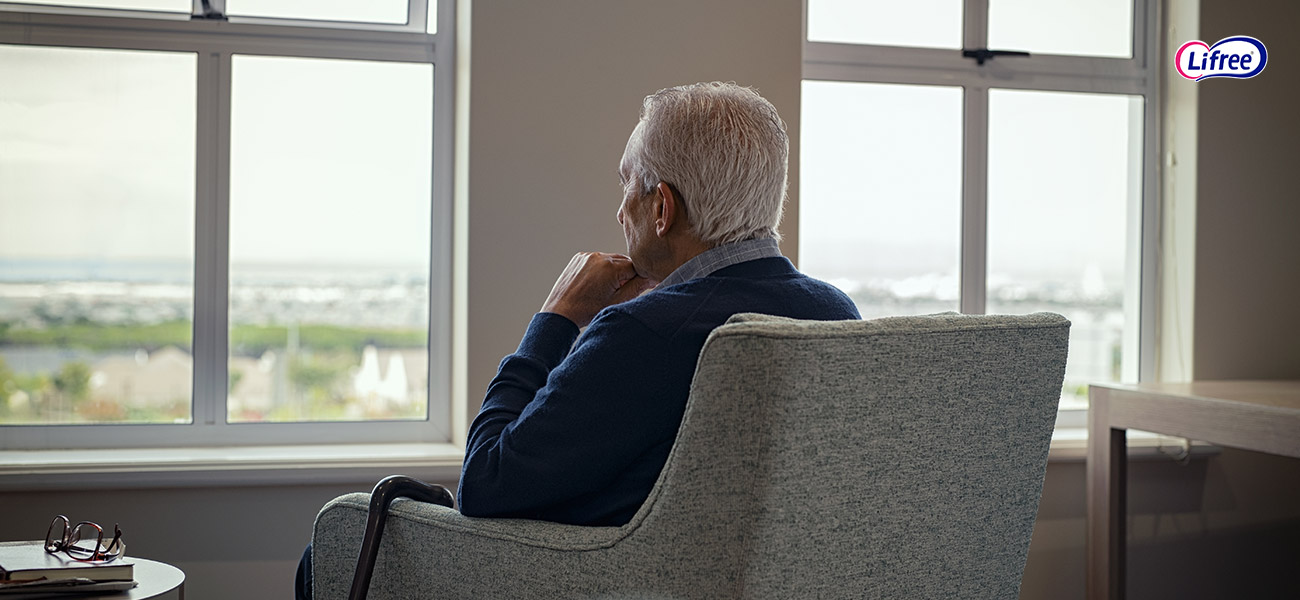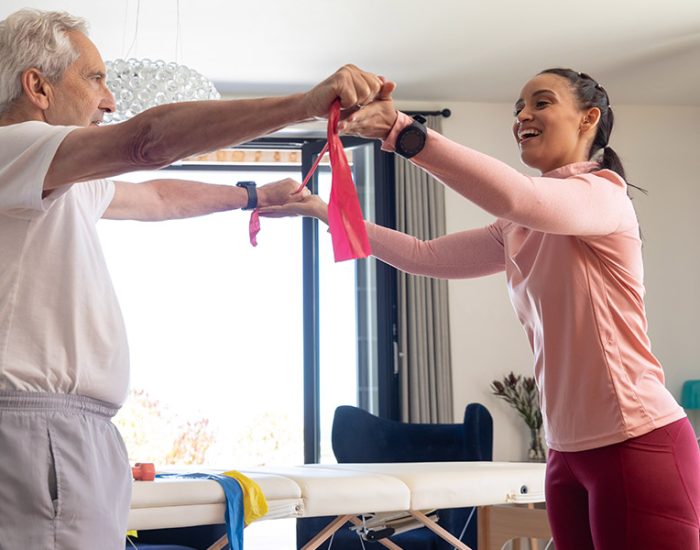Dealing with Urinary Incontinence in the monsoon season
Although Monsoon does bring some relief in a sense from the scorching heat, for many people who are dealing with urinary incontinence, it can also bring along a unique set of problems. Rain, sticky air, and surprise showers — they can make handling leaks feel like a real task. But with a few smart habits, even the monsoon doesn’t have to slow you down. In fact, it can still be a season you enjoy.
Let’s see how urinary incontinence affects people during the rains, and more importantly, what one can do to stay active, dry, and at ease.
Why is Monsoon a difficult season to manage for people dealing with Incontinence?
Humidity is the one of the biggest concerns.In the rainy season, everything stays a bit damp — even absorbent products like adult diapers. If there’s even a little leakage, they can end up feeling heavier and take much longer to dry. And when the skin around that area stays damp for too long, it doesn’t just feel unpleasant — it can start to itch or cause irritation if not taken care of soon enough.
The frequent changing of clothes, the fear of stepping out due to leakage, and worry over finding a clean restroom can make seniors or incontinence facing adults feel stuck in a loop of being indoors, and if we add in the unpredictability of rain, the season starts to feel more like a hurdle than a blessing.
Common Issues Faced During This Season
Slow drying of clothes and bed linen
Accidental leaks or nighttime wetness need immediate washing. But drying one’s laundry in the monsoon season is a tedious task due to Inadequate sunlight, moisture can linger in the fabric, which can further lead to foul smells or even fungal growth.
Skin irritation and infections
In a wet or humid environment, the risk of bacterial and fungal infections increases multifold, especially in sensitive areas. Even small leaks, if not addressed in a timely manner, can cause problems that can last for days.
Avoiding outdoor visits due to fear of leakage
The fear of a leak happening when you’re out and enjoying, coupled with wet roads and the hassle of changing clothes, often makes people skip their evening or morning walks, their doctor visits, or maybe even social outings.
Simple Steps to Make Monsoon Easier
Here are some practical tips that we can follow for managing urinary incontinence in this very tricky weather:
1. Choose the Right Absorbent Product
This time it is important to believe in a product that offers long-lasting absorption and keeps moisture locked away from your skin. For example, Lifree adult diaper pants are especially designed to hold up to 6 glasses of fluid, giving extended up to 12 hours of dryness. The Quick Dry Sheet and Side Leg Gathers help in preventing side leaks and are very useful when movement is restricted during rain.
2. Always go for Breathable Fabrics
Wearing breathable clothes always makes a difference because unlike synthetic or tight fabrics that trap moisture and heat, breathable clothing allows wind to pass through and free up moisture. Loose fits also sometimes help the body stay evenly ventilated, especially when you’re wearing absorbent pants for long durations.
3. Maintain Hygiene Routines
You can nurture good hygiene by following the steps : bathing twice a day, keeping the skin dry by using a gentle or antifungal powder around the inner thighs and the groin area, which can prevent seasonal rashes.Also after every diaper change, before wearing a fresh pair, make sure to cleanse the area with water or wipes and dry it.
4. Just Carry a Backup, Always
You never really know how things will go when you’re out during the rains. Sometimes, you think it’ll be a short trip, and then bam — traffic, sudden downpour, or just delays. It helps to have an extra diaper or pad in your bag, a few wipes, maybe even a spare plastic bag. Takes barely a minute to pack but saves you a lot of trouble later.
5. Let the Air Move Around
During the rains, rooms get stuffy fast. Just make sure things like your bed don’t stay damp for too long. Put a waterproof layer under the sheets if you can, and keep the fan going — even a little breeze helps. These tiny things? They really add up when you’re trying to sleep well.
It’s Not Just Physical — It Hits Emotionally Too
Rainy days can do more than just mess with your routine. They often bring a kind of emotional weight too. When you start avoiding outings, skipping meetups, or worrying about “what if something happens,” it takes a toll on how you feel inside. That quiet stress can build up. And honestly, talking helps — whether it’s with family, a caregiver, or someone you trust. The more you speak about it, the less alone you’ll feel.
Giving someone the right tools — like good absorbent wear that actually works — is a real step toward helping them move freely again. It’s not about hiding the problem. It’s about facing it with confidence and finding ways to live more freely, one day at a time.
To Wrap It Up
Sure, the rains bring their share of puddles, slush, and humidity. But that doesn’t mean they have to bring extra stress too. Incontinence can be handled in any season — even the dampest ones. A little know-how, some small changes in routine, and the right kind of support make all the difference.
So let it rain. You’re more than ready for it.
FAQ’s
2. What issues are commonly faced during the rainy season by those with incontinence?
Common problems include clothes and linen drying slowly due to low sunlight and moisture buildup, increasing the risk of foul odors or fungal growth. Additionally, heightened humidity raises the likelihood of skin irritation and infections in sensitive areas. Fear of leakage keeps many from going outdoors, reducing physical activity and affecting emotional wellbeing.
3. How can the right absorbent product help during monsoon?
Using a high-quality adult diaper designed for monsoon—such as those offering up to 12 hours of dryness and strong moisture-locking technology—helps keep skin dry and prevents leaks even during movement. Features like Quick Dry Sheets and side leg gathers support long-lasting comfort and minimize side leakage, essential in humid conditions.
4. Why is breathable clothing recommended alongside absorbent products?
Breathable, loose-fitting clothing allows airflow that helps evaporate moisture, unlike tight or synthetic fabrics that trap humidity. This reduces heat and dampness around the skin, enhancing comfort when using absorbent products for extended periods.
5. Which hygiene practices can help prevent irritation and infections in monsoon?
Maintaining good hygiene is key: bathe twice daily, gently cleanse after every diaper change, pat the area dry, and use antifungal or gentle powders around the groin and inner thighs. These steps help reduce moisture, irritation, and infection risk in humid weather.
6. What should caregivers pack when venturing out during the monsoon?
Pack a small emergency kit including an extra diaper or pad, cleansing wipes, and a plastic bag for soiled items. Rain and unexpected delays are common, and having backups ensures preparedness, maintains hygiene, and saves a lot of trouble.
7. How can airflow at home help during the monsoon?
Damp rooms and bedding can trap moisture, increasing discomfort. Using a waterproof layer under the sheets and keeping a fan on—even a gentle breeze—helps air circulation and speeds up drying, creating a more comfortable environment for restful sleep.
8. How does urinary incontinence affect one emotionally during monsoon?
Avoiding outings, social meetups, or exercise due to leak worries or clothing changes can lead to stress, isolation, and a decline in emotional wellbeing. Talking openly with a trusted person, caregiver, or family member can help ease this emotional burden and provide much-needed support.
9. What simple strategies can help make the monsoon more manageable?
Small yet effective tips include wearing breathable clothes, choosing high-absorbent diapers, maintaining hygiene, carrying backups, using airflow-enhancing tools at home, and discussing concerns with others. These practical habits help reduce discomfort, prevent leaks, and foster confidence even in damp, unpredictable weather.
10. What’s the overall takeaway for managing incontinence during monsoon?
Rainy season may bring challenges such as humidity, slow drying, and increased infection risk—but with proactive habits (proper products, hygiene, airflow, preparedness, and communication), urinary incontinence becomes manageable. The focus is on empowering individuals to stay confident and mobile, regardless of the weather.






















